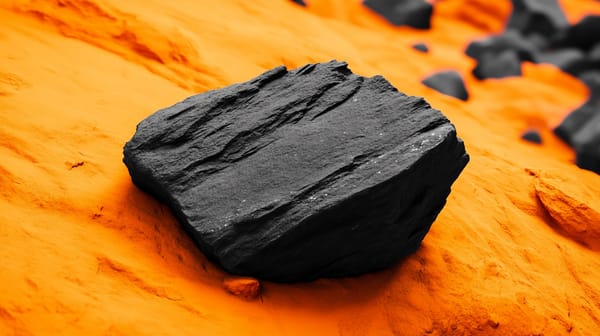Bitcoin's 1% Price Surge to $25,913.96: Key Takeaways for September 8, 2023
Bitcoin's price has seen a moderate 1% surge over the past 24 hours, rising to $25,913.96. This comes after a period of stagnation for the world's largest cryptocurrency by market capitalization. In this article, we will analyze the key metrics behind this price increase and uncover insights into Bitcoin's potential price trajectory.

To start, Bitcoin's market capitalization now stands at $505 billion. This represents a $5 billion increase over the past day in tandem with the price rise. Trading volume over the past 24 hours sits at $7.84 billion, demonstrating solid interest and activity among traders and investors.
Drilling down into the hourly timeframe, Bitcoin's price is up a modest 0.32% over the past 60 minutes. This points to positive momentum continuing to build behind the scenes. Zooming out to the daily timeframe, BTC has now gained 1% over the past 24 hours. However, on the wider weekly timeframe, Bitcoin remains down a slight 0.22%.
Looking at the past month, Bitcoin has endured a substantial pullback of 11.86% as part of a broader correction in the crypto markets. However, zooming out further to the past 6 months paints a rosier picture. BTC has still managed to gain 19.42% over this longer time period, highlighting its long-term upside potential.
Overall, Bitcoin appears to be in the early stages of regaining its bullish momentum after a month-long cooldown. The technicals point to BTC having found a temporary floor around $25,000, with the potential to retest the key $30,000 psychological barrier if positive momentum continues building.
Will Bitcoin's Price Reclaim $30K This Year?
With Bitcoin appearing to stabilize and bounce back from recent lows, a key question is whether BTC can reclaim the pivotal $30,000 level before year's end. Analyzing the current price action and on-chain metrics offers clues as to the likelihood of this occurring.
On the bullish side, Bitcoin's network fundamentals remain strong. The BTC blockchain continues to see over 300,000 transactions per day, demonstrating substantial real-world utility and activity. Meanwhile, whale wallets holding 1,000+ BTC have continued accumulating, signaling confidence among longtime crypto investors.
However, headwinds remain that could limit upside in the short term. The traditional financial markets face uncertainty heading into year's end, with equities and bonds volatile amidst recession fears. As Bitcoin tends to trade in a correlated manner with stocks, this macro uncertainty could restrict major upside.
Additionally, miner capitulation following Bitcoin's plunge below $30,000 means BTC's hashrate and security are still recovering. Until miners have fully stabilized, substantial new money may remain on the sidelines.
Overall, the odds seem split as to whether Bitcoin can definitively clear $30,000 again this year. While the cryptocurrency has rebounded from recent lows, macro uncertainty and miner instability remain hurdles. A prudent prediction would be for BTC to potentially test, but not sustainably clear $30K until early 2024 when the Fed potentially eases policy.
How Will Reduced Inflation Impact Bitcoin's Price?
With inflation appearing to have peaked, a key question is how declining inflation could impact Bitcoin's price going forward. As an inflation hedge asset, does lower inflation diminish BTC's investment appeal and upside potential?
The clear positive of declining inflation is that it reduces uncertainty and fears about runaway prices across the economy. This provides greater confidence for consumers and businesses to invest and spend. The likely result is faster economic growth, more risk-on investing activity, and higher asset prices broadly.
However, lower inflation on its own does not necessarily dampen Bitcoin's investment thesis. Remember that BTC is decentralized digital money with a fixed supply. Regardless of inflation levels, Bitcoin offers an alternative store of value and transaction system outside of fiat currency and traditional finance. Its role as "digital gold" persists even in a low inflation environment.
Additionally, lower inflation could actually boost Bitcoin adoption among institutional investors. With less need to invest in inflation-hedging assets, investors may be more willing allocate to higher upside yet still uncorrelated assets like Bitcoin. This could provide a tailwind to BTC investment flows.
Therefore, while inflation was a major catalyst of Bitcoin's gains, reduced inflation on its own is unlikely to dramatically impact Bitcoin's price trajectory. The cryptocurrency's inherent properties and expanding utility remain drivers of investment demand over the long term.
Conclusion
In summary, Bitcoin's bounce back above $25,000 appears to signal a stabilization in price after a volatile couple of months. While BTC faces uncertainties in reclaiming $30K this year, its network and adoption fundamentals remain strong over the long run. Meanwhile, declining inflation is unlikely to negatively impact Bitcoin's investment thesis but rather could provide greater confidence in deploying capital into the digital asset. As the cryptocurrency space matures, Bitcoin remains well positioned as a core portfolio holding for the future.




